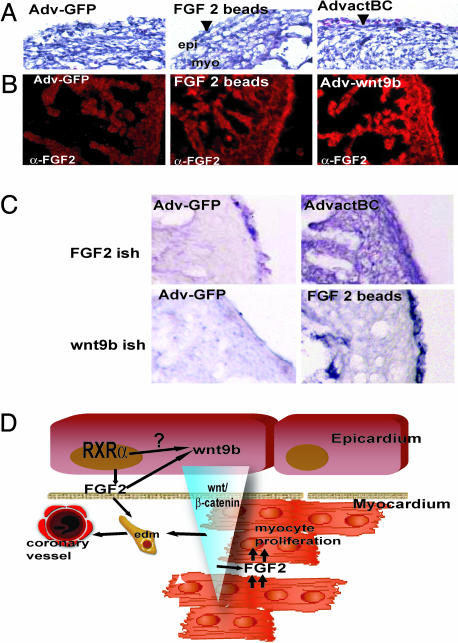Fig. 4.
A retinoid–FGF–wnt pathway for epicardial activation and regulation of myocardial growth. (A) Histological analysis of chicken embryos overexpressing control GFP adenovirus (Adv-GFP), constitutively active β-catenin (AdvactBC), Wnt9b (Adv-wnt9b), or FGF2 beads. Observe the increased vascularization as demonstrated by the presence of blood cells in the subepicardial zone (arrowhead) upon β-catenin treatment and after grafting of FGF2-soaked beads. (B) Increased FGF2 expression is restricted to the epicardium upon FGF2 treatment. This finding is in contrast to induction of myocardial FGF2 expression after Wnt9b treatment. (C) Schematic showing the predicted relationship between wnt/β-catenin/FGF2 activation. Overexpression of active β-catenin induces FGF2 mRNA accumulation in the myocardium. Reciprocally, overexpression of epicardial FGF2 results in the accumulation of wnt9b mRNA in the epicardium. (D) Schematic of a proposed molecular mechanism for RXRα regulation of coronary formation and myocardial growth. RXRα activates the expression of epicardial FGF2. Epicardial FGF2 stimulates EMT of epithelial epicardial cells and induces epicardial wnt9b expression. Wnt9b then stabilizes myocardial β-catenin, inducing myocardial synthesis of FGF2, which in turn stimulates myocardial proliferation.

